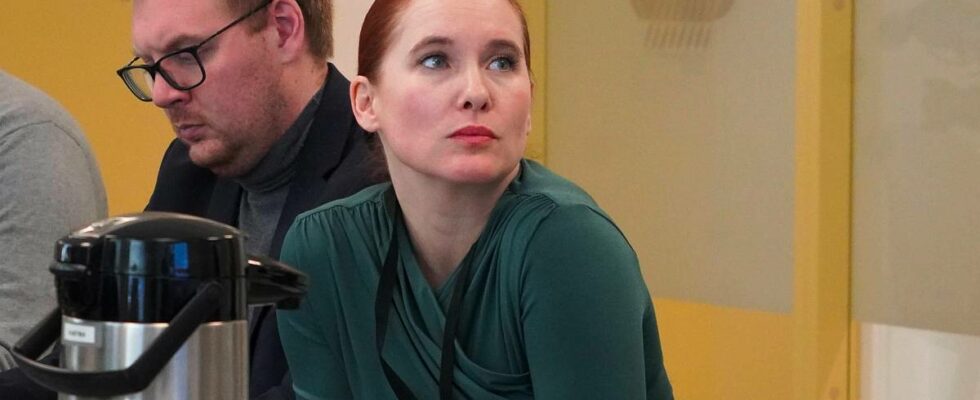When employees such as teachers and home helpers are to be paid, several Norwegian municipalities pay by overdraft. This works the same as a credit card for you and me. The municipalities can use the account when they do not have their own money available. It is no longer unusual for municipal coffers to run out before all salaries have been paid. Moving more and more Norway’s largest bank, DNB, has a customer relationship with every fifth municipality in Norway, that is to say over 70 of the country’s 357 municipalities. At the request of news, the bank has carried out a count. It shows a doubling in the number of inquiries from municipalities about overdrafts, compared to previous years. And outstanding credit has never been higher. – We notice that several of the municipalities that have overdrafts with us draw more often and somewhat more now than before, says Terje Christiansen, who is head of the public sector at DNB. Terje Christiansen is head of the public sector at DNB, which now has 70 municipalities as customers. Photo: Tom Ole Buaas He adds that for many municipalities this solution can be a good insurance against payment problems at a single point in time. But for others it is far more demanding. No “quick fix” Kragerø municipality is among those who have increasingly supplied themselves from the credit account in the past year. It has been done during a period where the municipality has spent more money than it has had income. The overdraft in Kragerø was NOK 50 million a year ago. In October last year, it was doubled to NOK 100 million. In March, it was doubled again to NOK 200 million. And a further increase may be needed if the municipality continues to spend more money than it has income. The overdraft alone now leads to millions in interest expenses for the impoverished municipality. This means that the municipality has less money to spend on important tasks such as care for the elderly and schools. Kragerø is among the country’s most popular summer towns, with many rich cottage owners. But the municipality must have credit in the bank to pay salaries to employees. Photo: Lars Tore Endresen / news Mayor Charlotte Therkelsen (R) says that it is expensive to be poor, also for municipalities. – Overdrafts are very expensive. These are the most expensive loans we have and something we would like to avoid. The municipality is facing a tough autumn and work is now being done to find a number of small and large cuts that can bring the economy into balance. Can borrow almost unlimited Senior researcher at Telemarksforskning and expert on municipal finances, Kjetil Lie, believes there is reason to sound a warning if certain municipalities are getting more and more short-term debt. – The warning lights should be on then. It is, in a sense, a vicious circle. He believes that the increase is due to several municipalities experiencing tighter finances. The municipality that has had the biggest problems in recent years is Moskenes municipality in Nordland. In the banks, the municipalities are nevertheless popular customers. It takes a lot before a municipality gets a no from the banks for a loan. Although municipalities cannot borrow unlimited amounts of money, Norwegian municipalities are very creditworthy and can borrow almost unlimitedly, according to DNB. Creditworthiness is the ability to service one’s debts. But it is not only the short-term debt that is increasing. In July, the total debt growth in Norwegian municipalities showed a record high 9.9 per cent for the last twelve-month period. In the overview from Statistics Norway, the graph for debt growth is now going up for municipalities, while it has gone in the opposite direction for households. An analysis carried out by Statistics Norway in 2019 showed that Norwegian municipalities’ debt had quadrupled since the year 2000. Loans for investments have been largest in the following services: Water, sewage and sanitation Primary school Health and care Municipal housing. Fred-Ivar Syrstad acted as State Administrator in Vestfold and Telemark, when Kragerø’s budget was not approved. Photo: Robert Hansen / news Must save themselves In Kragerø, the State Administrator has intervened and continues to refuse to accept the municipality’s budget for 2024. At the same time, Kragerø is among an increasing number of municipalities on the Robek list. There is a register of municipalities that have not had good enough control over the economy. ROBEK list as of August 2024 Nordland: Nesna, Meløy, Fauske, Lødingen, Vågan, Andøy and Moskenes Finnmark: Hammerfest, Vadsø, Katokeino and Gamvik Troms: Tjelsund and Kåfjord Trøndelag: Røros and Røyrvik Møre and Romsdal: Hareid Buskerud: Flesberg Østfold: Moss Innlandet: Åsnes Telemark: Kragerø Agder: Vegårshei Vestfold: 0 Rogaland: 0 Vestland: 0 Akershus: 0 Neither Kragerø nor other municipalities with large debts can expect any extra money from the state to clean up the economy. They have to sort that out themselves. – No one comes to help a municipality that is in a difficult financial situation, says assistant state administrator in Vestfold and Telemark, Fred-Ivar Syrstad. Published 13.09.2024, at 17.45
ttn-69
Municipalities use overdrafts more often and more – news Vestfold and Telemark – Local news, TV and radio

